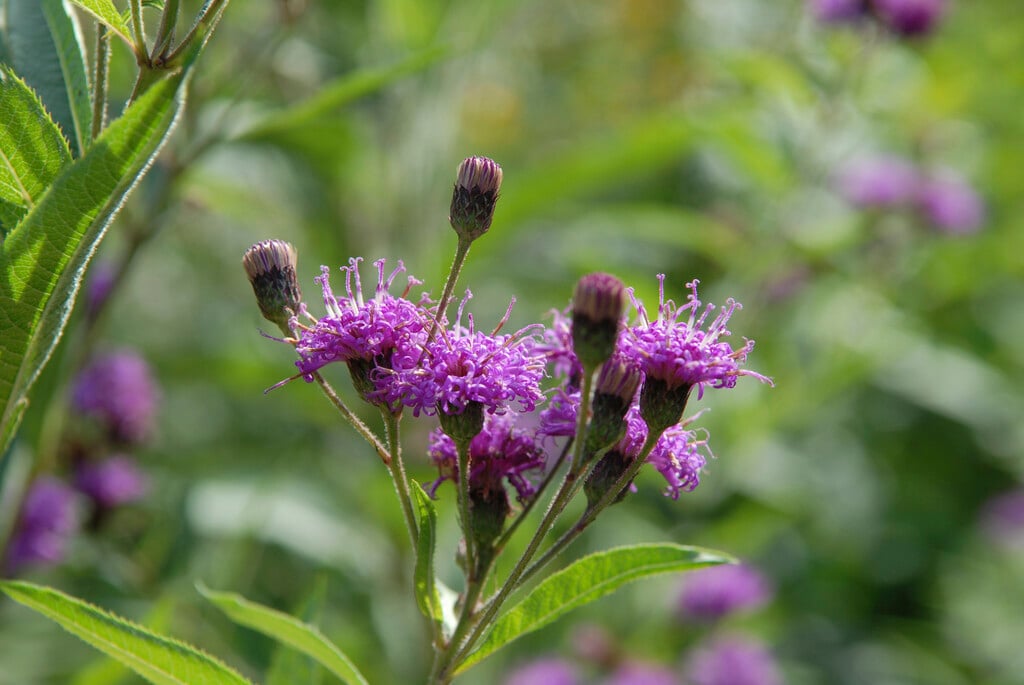Vernonia arkansana 'Mammuth'
Arkansas ironweed 'Mammuth'
A clump-forming perennial to 1.8m tall with stout, upright, self-supporting stems densely clothed with narrow, lance-shaped leaves and dense clusters of rosy pink-mauve flowers from late summer to autumn

Buy this plant
Size
Ultimate height
1.5–2.5 metresTime to ultimate height
2–5 yearsUltimate spread
0.5–1 metresGrowing conditions
Moisture
Moist but well–drainedpH
Acid, Alkaline, NeutralColour & scent
| Stem | Flower | Foliage | Fruit | |
| Spring | Green | |||
|---|---|---|---|---|
| Summer | Pink Purple | Green | ||
| Autumn | Pink Purple | Green | ||
| Winter |
Position
- Full sun
- Partial shade
Aspect
East–facing or South–facing or West–facing
Exposure
Exposed or Sheltered Hardiness
H7Botanical details
- Family
- Asteraceae
- Native to GB / Ireland
- No
- Foliage
- Deciduous
- Habit
- Clump forming, Columnar upright
- Genus
Vernonia are annuals, perennials, climbers, sub-shrubs, shrubs and trees, though only the perennials are in cultivation. They have upright stems, simple, stalkless leaves and flat branched heads of tubular purple or reddish pink, occasionally white, flowers
- Name status
Accepted
How to grow
Cultivation
Cut back the old stems before onset of new growth in spring. Deadhead if self-seeding is a problem It will tolerate most soil types, but prefers rich, evenly moist soils in full sun or light shade. Mulch soils prone to drying out in summer
Propagation
Propagate by division in spring
Suggested planting locations and garden types
- Cottage and informal garden
- Prairie planting
- Flower borders and beds
Pruning
Cut back the old stems before onset of new growth in spring. Deadhead if self-seeding is a problem
Pests
Generally pest-free
Diseases
Generally disease-free
Love gardening
Sign up to receive regular gardening tips, inspiration, offers and more
View our Privacy Policy
Get involved
The Royal Horticultural Society is the UK’s leading gardening charity. We aim to enrich everyone’s life through plants, and make the UK a greener and more beautiful place.